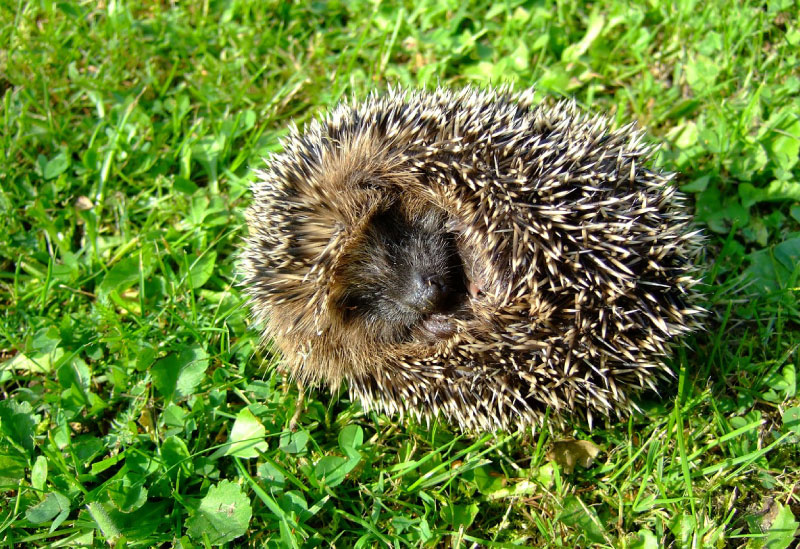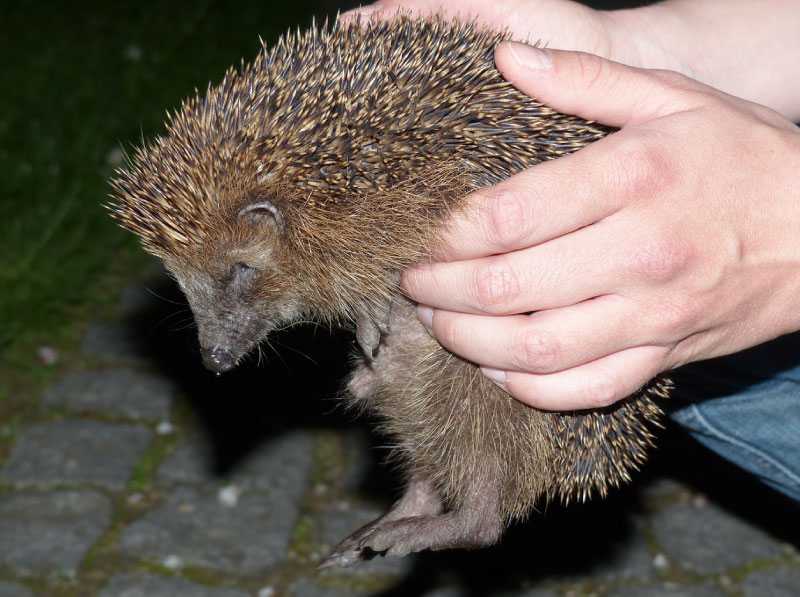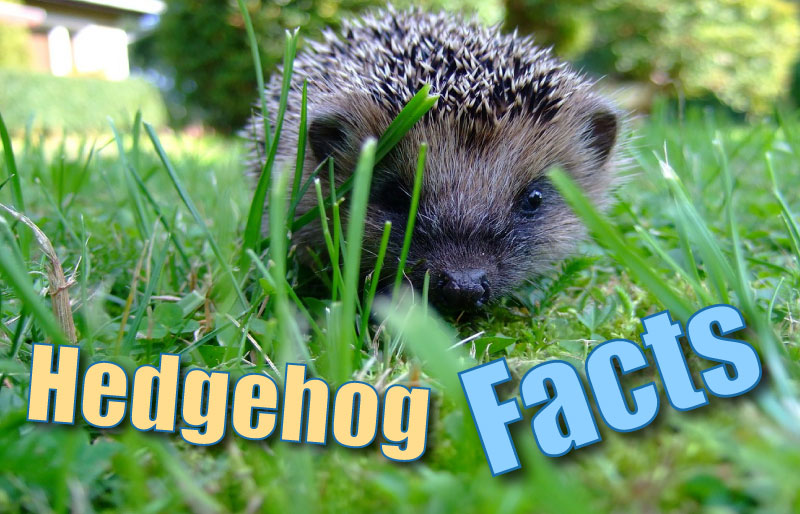Hedgehog facts for kids and adults. On this page you’ll discover where hedgehogs live, how many species of hedgehog there are in the world, animals related to hedgehogs, and much more …
Hedgehog Facts at a Glance
- Type of Animal: Mammal, member of the order Eulipotyphla
- Animal Family: Erinaceidae; subfamily Erinaceinae
- No. of Hedgehog Species: 16 species of hedgehog are currently recognized
- Where Found: Europe, Asia, and Africa (also introduced to New Zealand and kept as pets in North America)
- Distinguishing Features: Round body covered with spines
Hedgehog Facts: Meet the Hedgehog
Hedgehogs are small spiny mammals in the subfamily Erinaceinae. Sixteen species of hedgehog are currently recognized. They are found in the wild in Europe, Asia, and Africa. Hedgehogs have also been introduced in New Zealand, and are kept as pets in other parts of the world.
Hedgehogs have round bodies and short legs. Their backs and sides are covered in long, hard spines. Their face and undersides are covered in softer hair. Hedgehogs have long snouts and small black eyes.
An average hedgehog is 12-15 in. (30-38 cm) in length, and weighs 1.5 – 2 lb. (700-1000 g).
Most hedgehogs are nocturnal (active at night). Hedgehogs spend most of the day asleep, hidden deep in the undergrowth, often in dens that they have excavated themselves.
Hedgehogs have poor vision, and rely mainly on their excellent sense of smell to find food. Hedgehogs use their long snouts to root around the leaves and to capture and manipulate their food.
Hedgehogs are solitary, only coming together to breed. Males often act aggressively towards one another when they meet. Hedgehogs make grunting and snuffling sounds while foraging in the undergrowth.
Hedgehog Spines
Depending on the species, hedgehogs can have up to 6000 spines. The spines are modified hairs. They are hollow and made of a material called keratin. (Your fingernails are made out of the same material.)
When a hedgehog is born, it has a smattering of soft spines. These are hidden underneath a layer of swollen protective skin. The swollen skin soon shrinks to reveal the spines. Within a month, the soft spines are replaced with hard adult spines in a process known as ‘quilling’.
The hedgehog’s spines are defensive adaptation to protect it from predators. All hedgehogs are capable of rolling themselves up into a ball when threatened. This means that a predator risks injuring itself if it tries to make a meal of the hedgehog.
Hedgehog species with fewer quills (usually those found in warmer climates) are less able to defend themselves in this way, and are more likely either to flee from, or to attack, the predator.
Hedgehog Diet: What Do Hedgehogs Eat?
Hedgehogs are omnivores (i.e. they eat both plants and meat). Their diet includes insects, slugs, snails, worms, frogs, bird eggs, fruit, grass and mushrooms. Hedgehogs are sometimes called the ‘gardener’s friend’ because they eat garden pests.
Hedgehog Facts: Life Cycle
Hedgehogs mate shortly after waking from hibernation. The gestation period (how long a female hedgehog is pregnant) in between 4 and 6 weeks. Females give birth to between 1 and 11 young. Hedgehogs are blind at birth and totally reliant upon their mother. The male hedgehog plays no part in bringing up the young.
The young leave the nest after between 4 and 7 weeks. Females produce 1 to 3 litters per year.
Hedgehogs reach maturity after 9 to 11 months.
List of Hedgehog Species
The sixteen hedgehog species are divided between 5 genera, as shown in the table below.
*** Confused by terms such as ‘order’, ‘family’ and ‘genera’? Check out our Animal Classification page, which has a free printable worksheet! ***
| Genus | English Name | Scientific Name | Conservation Status |
|---|---|---|---|
| Atelerix | Four-toed hedgehog | Atelerix albiventris | Least Concern |
| Atelerix | North African hedgehog | Atelerix algirus | Least Concern |
| Atelerix | Southern African hedgehog | Atelerix frontalis | Least Concern |
| Atelerix | Somali hedgehog | Atelerix sclateri | Least Concern |
| Erinaceus | Amur hedgehog | Erinaceus amurensis | Least Concern |
| Erinaceus | Southern white-breasted hedgehog | Erinaceus concolor | Least Concern |
| Erinaceus | European hedgehog | Erinaceus europaeus | Least Concern |
| Erinaceus | Northern white-breasted hedgehog | Erinaceus roumanicus | Least Concern |
| Hemiechinus | Long-eared hedgehog | Hemiechinus auritus | Least Concern |
| Hemiechinus | Indian long-eared hedgehog | Hemiechinus collaris | Least Concern |
| Mesechinus | Daurian hedgehog | Mesechinus dauuricus | Least Concern |
| Mesechinus | Hugh's hedgehog | Mesechinus hughi | Vulnerable |
| Paraechinus | Desert hedgehog | Paraechinus aethiopicus | Least Concern |
| Paraechinus | Brandt's hedgehog | Paraechinus hypomelas | Least Concern |
| Paraechinus | Indian hedgehog | Paraechinus micropus | Least Concern |
| Paraechinus | Bare-bellied hedgehog | Paraechinus nudiventris | Least Concern |
The genus Erinaceus includes the European hedgehog, Erinaceus europaeus. Although this species is common in mainland Europe, its population is severely declining in the UK.
Hedgehog Family & Classification: Animals Related To Hedgehogs
Hedgehogs used to be placed in the order Insectivora. This grouping is no longer used, and hedgehogs are now placed in the order Eulipotyphla. This animal group also includes shrews and moles.
Hedgehogs are in the family Erinaceidae. This family also includes the hedgehogs’ closest relations, the gymnures, which are also known as hairy hedgehogs or moonrats. Although related to hedgehogs, gymnures don’t have spines, and look more like rats.
Are Hedgehogs Related To Porcupines?
Although both hedgehogs and porcupines have quills, the animals are not related. Hedgehogs are in the order Eulipotyphla, whereas porcupines are in the order Rodentia (i.e. they are rodents).
Another spiny animal that the hedgehog isn’t related to is the echidna, which is a marsupial.
Why Do Hedgehogs Hibernate?
All hedgehogs can hibernate, but those that live in warmer climates don’t always do so.
Hedgehogs living in colder climates hibernate during the winter. Depending on where they live, this can take place at some time between November and March. Hedgehogs hibernate to save energy because there is less food around during the colder months.
Hedgehogs prepare for hibernation by eating large amounts of food during the autumn. Hedgehogs often wake at least once during hibernation to move their nests.
What to Feed Hedgehogs?
Most hedgehogs are naturally lactose intolerant. This means that eating certain milk or dairy products may make them ill. If you find a poorly-looking hedgehog, don’t feed it bread or milk. If possible, call a local wildlife charity for advice.
Watch the video below to find out how to look after a hedgehog:
Hedgehogs as Pets
Some people keep hedgehogs as pets. The species most commonly kept as a pet is the African pygmy hedgehog.
Hedgehog Facts for Kids
- Hedgehogs can live up to 6 years in the wild.
- Hedgehogs are the only British mammal with spikes.
- Hedgehogs can swim and climb.
- A baby hedgehog is called a hoglet.
- A group of hedgehogs is called an array.
- Hedgehogs sometimes cover their spikes with foamy saliva! This may help to conceal their scent.
- Each hedgehog is home to around 500 fleas.
- Hedgehogs can travel up to 3 km in search of food.
Hedgehog Facts: Conclusion
We hope that you have enjoyed learning about these fascinating animals. If you live in an area in which hedgehogs are found, we hope that you are keeping an eye out for these secretive mammals.
- You can find out about many more amazing animals here: Animals A to Z
- Find out about mammals here: Mammals: The Ultimate Guide






